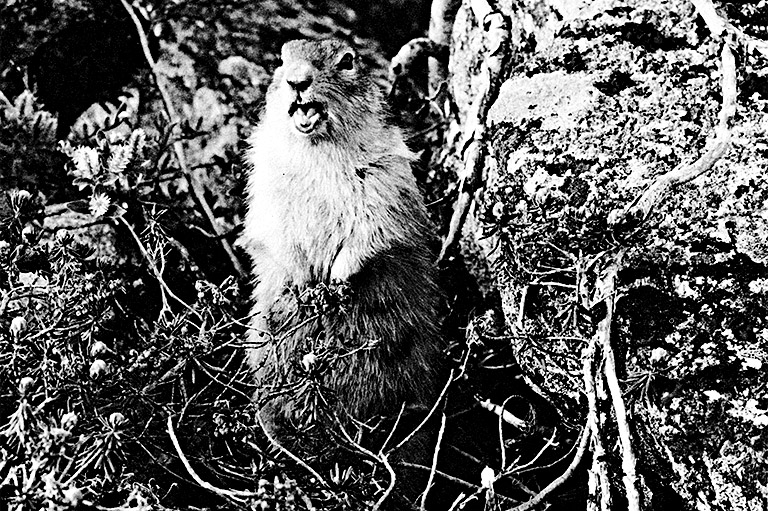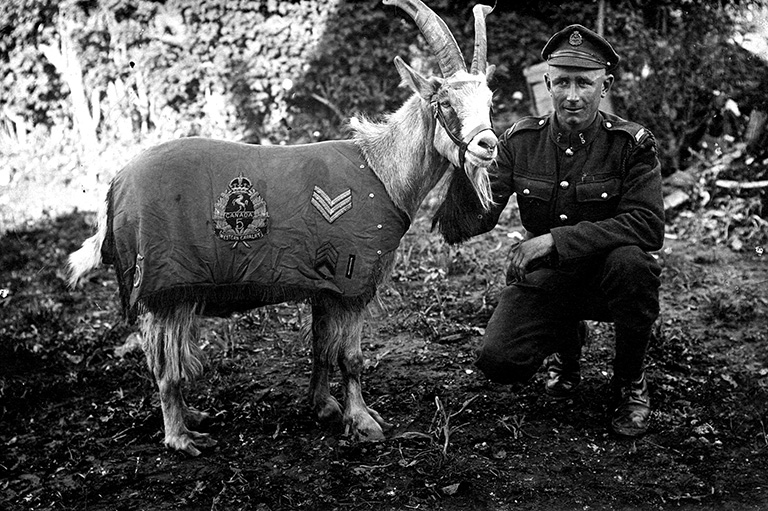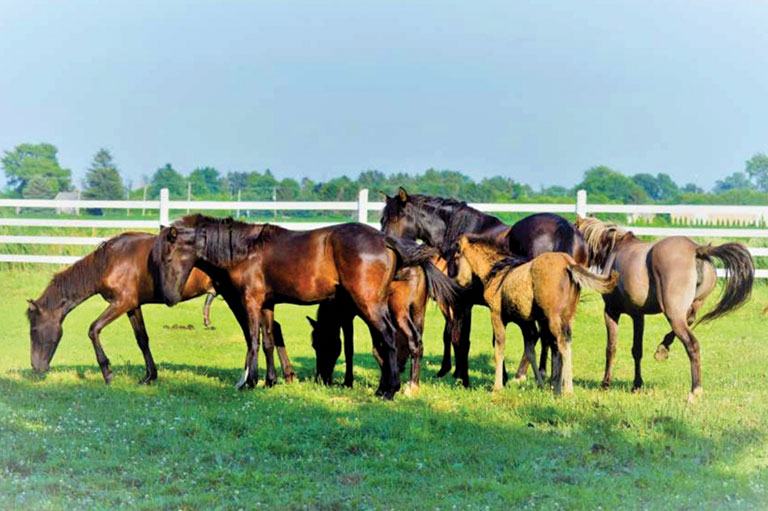Lettuce & Labrador
The old garden drills are still visible alongside long-abandoned homesteads in southern Labrador. Now grown over by grasses, these rows of raised soil lie nestled in dips and on southern facing slopes, valuable microclimates in an ecosystem determined by the Labrador current. Late nineteenth- and early twentieth-century gardeners made good use of pockets of peat dotting an otherwise rocky coast, or they trekked inland to plant precious cabbages, potatoes, and turnips, where the coastal rock folds into peal hog and temperatures are somewhat higher. Their efforts came in the wake of even earlier gardeners who first tilled the soil and experimented with a variety of species in the late eighteenth and mid-nineteenth century.
My Reader’s Digest Illustrated Guide to Gardening in Canada doesn’t include Labrador in its climatic zone map of plant hardiness. If I extend imaginary zonal lines northeastward from Sept-Îles and Chibougamau, a Labrador garden would find itself in Zones 1 or 2, typically characterized by short growing seasons and cool temperatures. Yet as early as 1770 the industrious and adventurous English gentleman-merchant George Cartwright had two men at the head of Lodge Bay, near present-day Mary’s Harbour, Labrador, “employed in bringing tree-roots out of the garden, and piling them up for fireing, in the time-honoured tradition of many a pioneer garden. Much further to the north, the Moravian missionaries at Nain also began gardens in the late eighteenth century, while the earliest record of gardening in interior Labrador comes from the Hudson’s Bay Company men stationed at the head of Groswater Bay, along the Churchill River, in the 1840s.
My own garden in St. John’s (Zone 5) developed during a time when I first came across archival records of these early Labrador horticulturists. Having spent several seasons in the 1980s and 1990s conducting archaeological surveys of southern Labrador, I could well imagine the patience and toil required to wring even a single row of radishes out of hard-won drills. Whereas I pondered symmetry, layout, borders, and peonies, the chief concerns of early Labrador gardeners were self-sufficiency from costly imported foods and access to fresh food, at least for part of the year. Nevertheless, their choices of plantings are at times intriguing and clearly made in the same spirit of exploration that brought them to these shores in the first place.
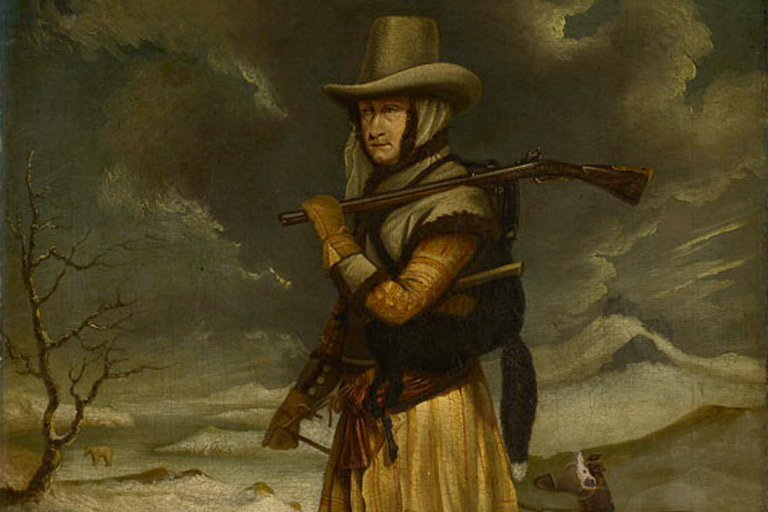
George Cartwright’s journals of his sixteen years in Labrador (1770–1786) provide a unique record of early life. Cartwright was a keen observer of his new homeland and his diaries abound with descriptions of “my lov’d Labrador.” Over the years he had at least five different residences between Capo Charles and Sandwich Bay and all had gardens. As part of his merchant endeavours, Cartwright traded with Inuit and Innu, and established a string of tilt runs (traplines) in the interior as well as sealing and salmon posts along the coast. He was an enthusiastic huntsman, and his diaries contain daily references to animals killed for both sport and subsistence.
Cartwright’s first garden, at his residence Ranger Lodge in today’s Lodge Bay, included a “lower garden” planted with peas, radishes, and turnips. In the autumn of 1772 his salmon storehouse, his workers’ house, and his own residence burned to the ground in a conflagration of salmon oil and timber frames. A day later he recorded that the “peas were all nipped by the morning frosts.” Hard limes, but within a week a new house was nearly complete. During this period of residence Cartwright also maintained a potato garden on a nearby island—the only reference to growing potatoes anywhere in his diaries.
In June 1774 Cartwright moved closer to the outer coast, near present-day Cape Charles, where a garden was begun “near the house” and “the first gathering of green pease” took place in early August. His stay there was short-lived, and a year later he established himself in Sandwich Bay, planting the first garden at the mouth of the Paradise River. Between studding a house and setting salmon nets around the bay, he “had a spot of ground dug, sowed some radish and turnip seeds, and set some cabbage plants which I brought from Charles Harbour.”
Cartwright lived in the Sandwich Bay region for the remainder of his years in Labrador, until 1786, with continued gardening efforts. In April 1776 he “sowed some mustard, cresses, and onions in a tub, and hung it up in the kitchen.” Three weeks later, however, “the seeds I sowed in a box ... were dead by giving them two [sic] much heal. I sowed some radishes and mustards afresh.” Cartwright dug a new garden, which was surrounded by a Fence, sowing radishes, onions, carrots, spinach, cresses, and “early Charlton-pease,” as well as “some French beans, corn, barley, oats, and some wheat of Quebec growth.” He also “had some wheat, rye, barley and oats sown in different spots about Muddy Bay and Dykes River.” In July 1777 Cartwright tried cucumbers for the first time: “pease are in bloom, and the cucumbers appear strong,” but the season, as ever, was not without its challenges, for the autumn high tides “flowed over the greatest part of my little garden, and destroyed many fine cauliflowers and cabbages.” His 1778 garden was surrounded by a wattle fence, and contained mustard, cresses, radish, onion, cabbage, and cauliflower, all mulched with kelp. The kelp, however, bred worms, which in turn devoured the seeds, forcing Cartwright to sow the seeds again. This time he also added cucumber seeds “under glasses. The kelp worms were a harbinger of worse things to come, for later that summer a New England privateer aided by some of Cartwright’s own men plundered his possessions along the coast, kidnapped limit employees, and left Cartwright with few resources for the coming winter.
Cartwright’s final garden in Isthmus Bay “produced excellent crops the first year, by being manured with seaweed and offals of fish; and also by mixing a portion of the barren sand that lay underneath, among the peat soil on the surface, it has ... brought everything to a degree of perfection, which had never been seen in that part of the world, in any former year. Here he planted several beds of the ubiquitous turnip and cabbage, lettuces, beets, red and white radishes, but also cucumbers (killed by July frosts), asparagus, and fennel.
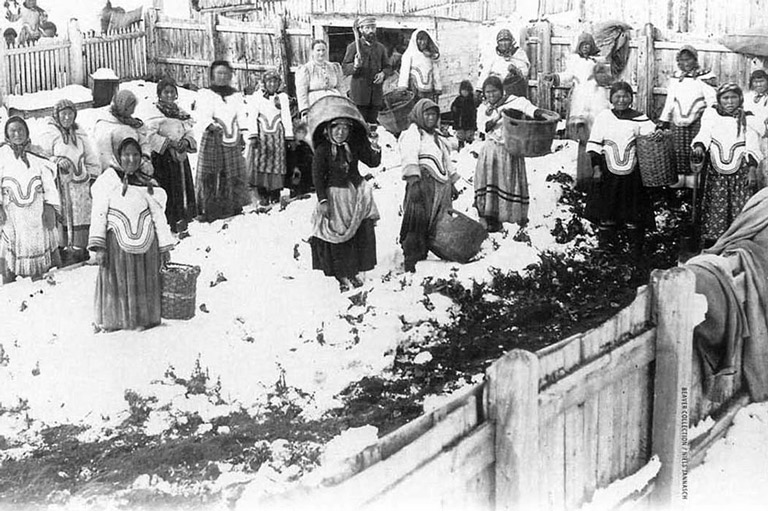
Cartwright is innovative and persistent throughout his years in Labrador. Time and again he overcame obstacles in life as in gardening. To loosen the dense peat soil, he learned to mix it with sand or ashes. He began seedlings indoors in March and April to ensure a modicum of harvest. Garden plots were cleared of snow in spring to hasten the warming of the soil. Spinach was prepared for winter consumption by salting. And the cold-climate gardening season was extended through tub planting and cold frames. We will never be certain whether Cartwright’s cucumbers ever ripened, but his repeated planting of other species, indeed his repeated digging of gardens, suggests that the effort reaped its rewards.
While Cartwright’s diaries contain many references to gardening, not much documentation is available concerning the early gardens of the Moravian missionaries. The Moravian Brethren, also known as Unitas Fratrum (Unity of Brethren), established their first permanent mission post in Nain in 1771, approximately 240 kilometres north of Sandwich Bay. The Moravian mandate was to Christianize the Inuit, but also to trade for whalebone, furs, fish, and seal products. The mission garden was characteristic of even Moravian station in Labrador, producing root crop staples for winter consumption and employing many limit workers. According to the Moravian diaries, Nain was chosen for a mission site because the land was even and had “a good soil for grass and garden stuff or other produce. An account of the newly established Nain mission, written in 1773 by a Moravian visitor to the mission, mentions that “they have a small sandy garden and they raise sallads in tolerable perfection. By the end of the nineteenth century mission gardens had become extensive operations, painstakingly fenced for protection from the wind, fertilized with fish offal, and utilizing raised beds and cold frames to nurture the harvest.
The Hudson’s Bay Company established its first Labrador post at North West River, at the head of Groswater Bay. The climate here, not subject to the cold Labrador current, is considerably warmer than along the outer coast, and the soils tend to be sandy.
The HBC’s first attempts at gardening seem to have been in the summer of 1842, when the posts under District Chief William Nourse’s charge “experimented on a small scale with the cultivation of various vegetables.” Nourse bad placed an order for a variety of seeds including, “1/2 lb Early Dutch x 1/2 lb Swedish Turnip with a little Radish, Lettuce & Cabbage seeds.” Nourse also wished for potatoes, and for livestock to produce manure for gardening. With a little salt fish, the potatoes would, he maintained, provide for many a winter’s meal. (Nourse’s wish was granted in 1844 when two cows with calf and seed potatoes arrived on board the HBC cargo vessel The Marten.
The only recorded results of the 1842 experiment originate from HBC employee George McKenzie, who was stationed at Sandy Banks Post along the Churchill River. On January 1842, McKenzie wrote to Nourse that “I have been very successful with the Gardens, having housed thirty six Barrels of Turnips. The utmost I thought we would collect was ten Barrels. By all indications, McKenzie was a committed gardener for he also sent a “sample of seeds and grain” to Nourse “which came to maturity at this place last summer.” We learn a little more about McKenzie’s sample of seeds and grain in a letter from Nourse dated January 9, 1842, to an HBC employee in Rigolet: “It appears be [McKenzie] bad tried several kinds of seeds merely as an experiment and be has sent me some of the Grain-Consisting of Wheal, Buckwheat, Barley, Oats, and Pease.” Reminiscent of Cartwright’s attempt at naturalizing grains seventy years earlier, the idea may have been to provide fodder for livestock.
As with Cartwright, identifying which plants might grow in a region was a practical way of ensuring good health, of reducing the cost of maintaining a post, and of avoiding the tedium of salted, tinned, and dried foods; “something fresh which is a great luxury when we should otherwise have to live on salt fish or Pork alone,” wrote Nourse. The HBC continued to garden intermittently at their various posts in Labrador. A somewhat famous Labrador garden of the mid-1800s was that of Donald Smith, later Lord Strathcona, chief factor at North West River between 1850 and 1869. Smith had seven acres under cultivation, much of it under glass. He grew turnips, peas, cucumbers, potatoes, pumpkins, melons, cauliflower, barley, and oats, as well as a large flower garden. He also kept a bull, twelve cows, two horses, chickens, a dozen sheep, and goals. By 1865 small garden plots next to planters’ homes had become part of the rural scenery in the North West River region, undoubtedly spurred by Smith’s agricultural project. Potatoes and turnips had become staple crops, in 1882. Reverend Frederick Ebenezer John Lloyd, touring portions of Labrador in his capacity as a representative of the Society for the Propagation of the Gospel, remarked, “I remember seeing the most beautiful bed of lettuce I ever saw at a Hudson Bay Company’s settlement, 250 miles to the Northwards on the coast of Labrador.”
It was, in fact, the references to lettuce, cresses, and mustard greens that first interested me in Labrador’s earliest gardeners. Why would seemingly fragile plants be chosen for a cold-climate environment? As I eventually learned from my own developing gardening efforts, all three species thrive in cool weather, and grow best in the absence of hot sunlight. Cartwright’s attempts at growing cucumbers may well have paralleled my own—keep trying. Interestingly, the potato, a ubiquitous garden vegetable since the mid-1800s, does not appear to have figured prominently for Cartwright and the Moravians. These early gardens were functional rather than decorative. They required considerable efforts to clear, till, and fertilize, and were, furthermore, attempted at the end of a five-hundred-year period of climatic cooling known as the Little Ice Age. Newfoundland poet Percy Janes recognized gardening as a reasonable metaphor for human effort and the following lines resonate well with the resilience and hardiness of Labrador’s first gardeners:
“so little fruit, but from the toil
make bodies like our enemy the rock;
and yield a subtler harvest to our souls,
tempered in patience and low expectation that may save
to help us endure in rougher gardens than the spud-and-turnip field.”
Themes associated with this article
Advertisement

